Apple Magic Trackpad in the office and at home
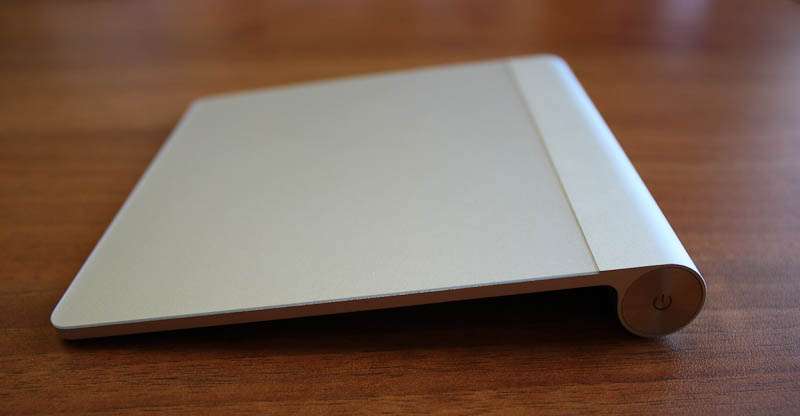
The prototype for the title of this post was the old children's story "Vitya Maleev" at school and at home. As you might guess, this literary work describes the adventures of a brisk young man in a school and home environment, where the norms of behavior and all the conditions for experiments sometimes differ radically. That's about this situation and the Apple Magic Trackpad got with my help, which I would like to tell as much as possible to anyone who might be interested.
')
It all started with the fact that my Logitech v470 faithful combat mouse went berserk, which in various incarnations has been accompanying me for a couple of years and managed to work hard on several working laptops from Sony Vaio Z and HP EliteBook to MacBook Air and Lenovo X201i. At the last, the mouse stumbled, began to fall off at times and in every way naughty. Digging the forums showed that the problem was not the mouse, but it still needed to be solved. It was then that I remembered that, due to long-standing browser connections, I can get an external touchpad from Apple that was sensational at the time of release. Moreover, I already had a wide experience in working with touchpads of apple laptops, and I was completely satisfied with the convenience of this process.
Said and done, a few days later the touchpad arrived. And the adventure began. The fact is that in the office I use a laptop Lenovo X201i, and at home - Apple Mac Mini and HP EliteBook 8730w. Ideally, the touchpad was planned to be used with all devices at once, and if the impression from the test results is favorable, I intended to purchase the device. That preceded the moment of the final decision, and will be discussed.
In the office
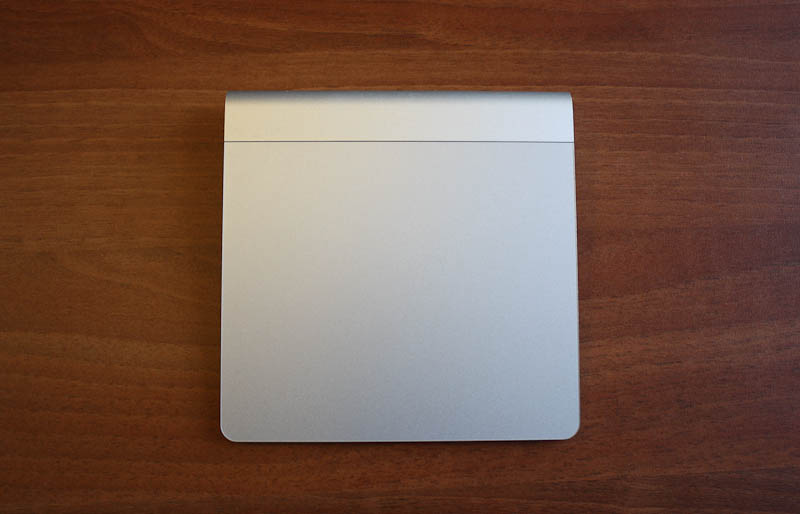
I can not say for everyone, but most of those who have tried to do without a mouse when working with relatively new Apple laptops (those with a “glass” touchpad), admit that using your touchpad can be very good. It is clear that with the mouse the movement is somewhere more accurate, and the perennial habit affects, but where previously you had to compromise with comfort, Apple touchpads are not such a bad decision. Accordingly, the external touchpad, which has a noticeably large diagonal, should be if not the best alternative, then at least a worthy replacement for the mouse. With this conviction, I proceeded to the dough gland.
Box "Apple-style" concise, in the corporate style. Nothing more, just the touchpad, the batteries are already inside. Extract, and immediately encounter the first problem. By default, Windows 7 sees the touchpad only as a Bluetooth mouse with minimal functionality - just move the cursor and click the left button. Even a right click is impossible. Obviously, working in this way is impossible. The situation is called "citizens, prepare the tambourines."

The fact is that there are no full-fledged drivers for Trackpad under Windows as such. The position of Apple, in general, is simple and clear - the touchpad is released for Apple computers, owners of other computers will have to use devices from other manufacturers. By the way, it is curious why in the same Logitech have not yet released anything like it? The only way to take advantage of part of the benefits of the Magic Trackpad is to pull out the necessary drivers from the installation packages of the proprietary BootCamp utility designed to run Windows on Macs. That is, completely to the mercy of the fate of "Windows" did not throw, who is looking for - he will always find.
Instructions to the non-trivial process of extracting and installing drivers can be easily found on the network, I will not give it here. The main thing is that as a result of all the manipulations, Windows 7 easily recognizes the Magic Trackpad and even starts working with several of the most important multitouch functions. This is a “corporate” scrolling with two fingers and a two-finger tap to call the context menu (right click). We hardly wait for the support of the rest of the three-finger and four-finger gestures in Windows, yet Apple is focused on its computers and the Trackpad doesn’t work much for sales.
Impressions of the Trackpad for Windows are ambivalent. For some reason, the smoothness of the scrolling is lame, there is no usual sense of accuracy. Tweaks in the control panel do not bring radical changes, comparing scrolling in Firefox under Windows 7 and Firefox under MacOS wins the latter, although not everything goes smoothly there. Single and double clicks and “tapas” work out well, no complaints about them.
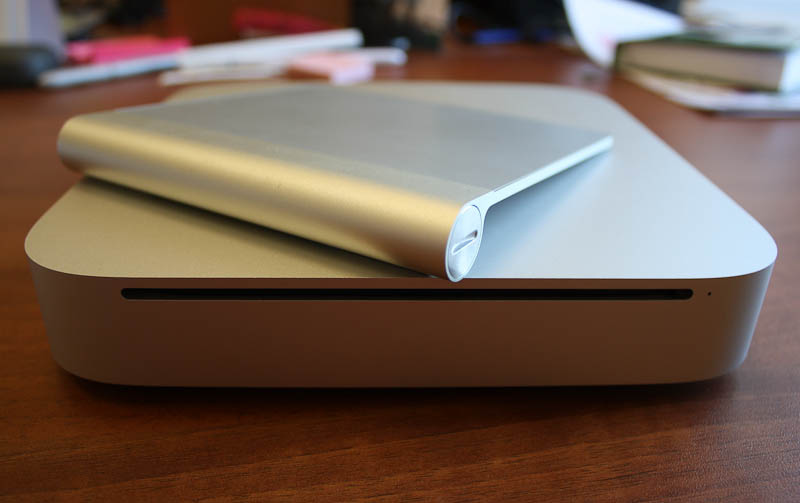
Houses
On the laptop from HP running Windows Vista (native 64-bit, that's why I don’t change it) the whole picture repeats. After installing the drivers, scrolling and the usual left-right click starts to work tolerably well. Important observations stand in the paragraph on the conclusions.
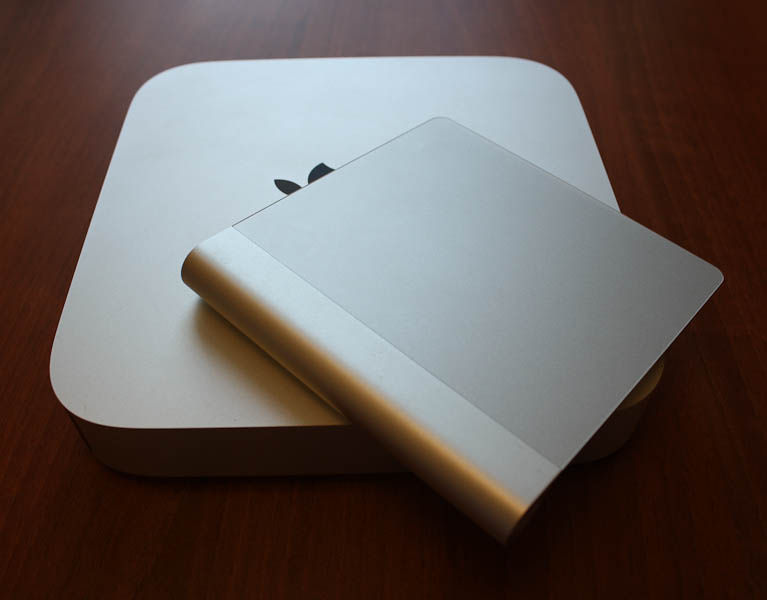
On the new Mac Mini, which is to be expected, the Trackpad works like a clock, only manage to count fingers and gesture directions. I can’t highlight any significant features, the Trackpad “starts up” immediately and works reliably until the battery is exhausted.
findings

In the process of relatively short use of the Trackpad (about a couple of weeks), I found out for myself the real (in my opinion) purpose of the device, the area where it can be useful. The fact is that it cannot fully replace the mouse when connected to a laptop or desktop computer (it does not matter under Windows or Mac OS) for one reason - when working on the touchpad, the wrist is not getting support. If the hand is more or less supported by the mouse, then when using the Trackpad, the wrist is just hanging in the air. If hands spend most of the time on the keyboard, then probably the Trackpad will be able to fully replace the mouse, but it’s from these “ifs” that the device cannot replace the mouse for most computer users. But, as it seems to me, it is not intended for this. The Trackpad is best suited to the small but still noticeable group of users who use the Mac Mini (or a regular computer) as a media center connected to a TV. It is here that all the talents of the device are fully revealed. In fact, it is inconvenient to drive a mouse over the knee, and you want to climb, for example, on Youtube or Ivi.ru from the sofa. The solution is simple: we put the Magic Trackpad on the sofa next to us and get full control working in the middle urban room. You can easily read mail and forums (when taking into account a decent diagonal TV and enlarged fonts), watch and download videos, listen to music and control other functions of the media center. In this application, the Trackpad, in my opinion, has no equal. Otherwise, he, no matter how much he wants to do the opposite, still loses to the usual mice under Windows and MacOS. But, like any specialized device, it leaves behind all possible options for managing "off the couch", which can not please the owners of computer-based home media centers.
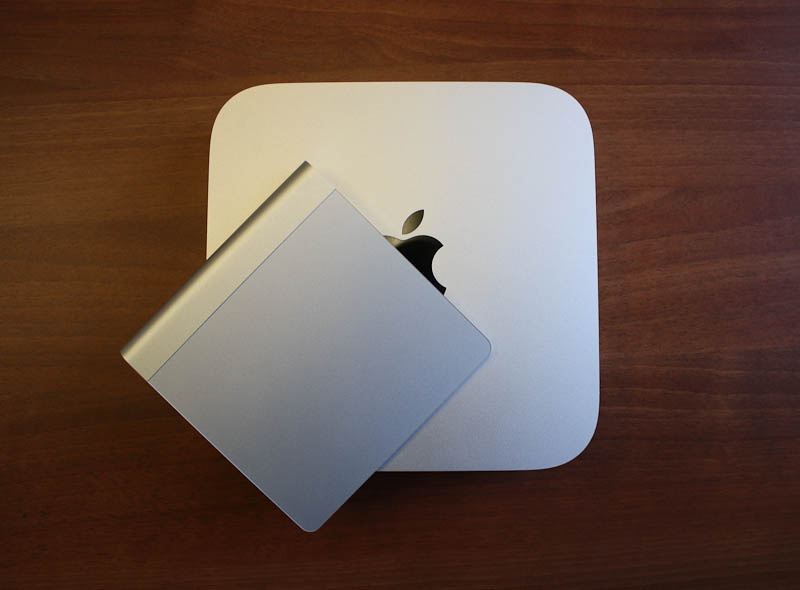
Ps. I have a decent camera only in the office, so I don’t cite the photos from the sofa in this post.
Source: https://habr.com/ru/post/114752/
All Articles